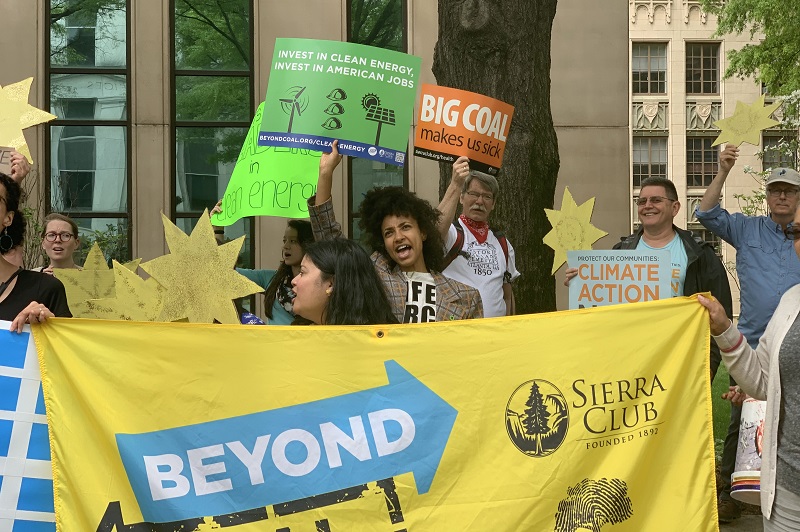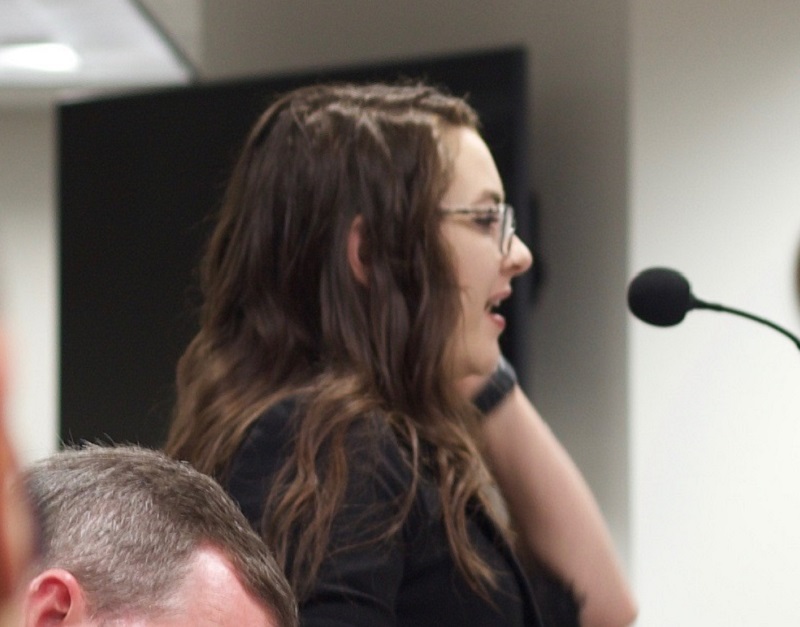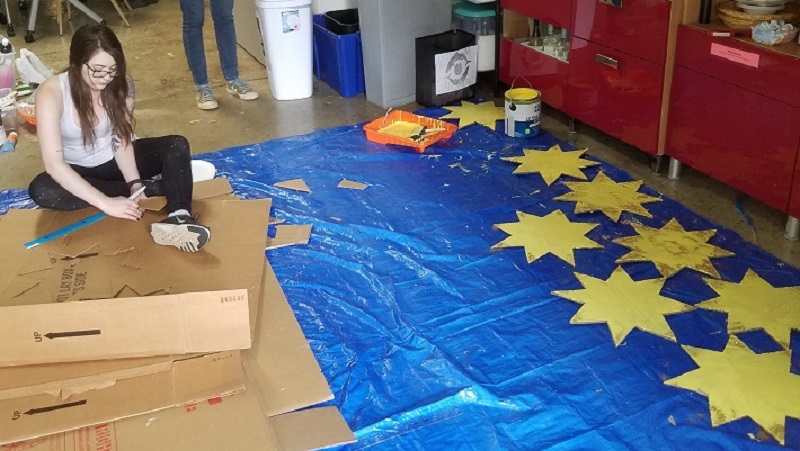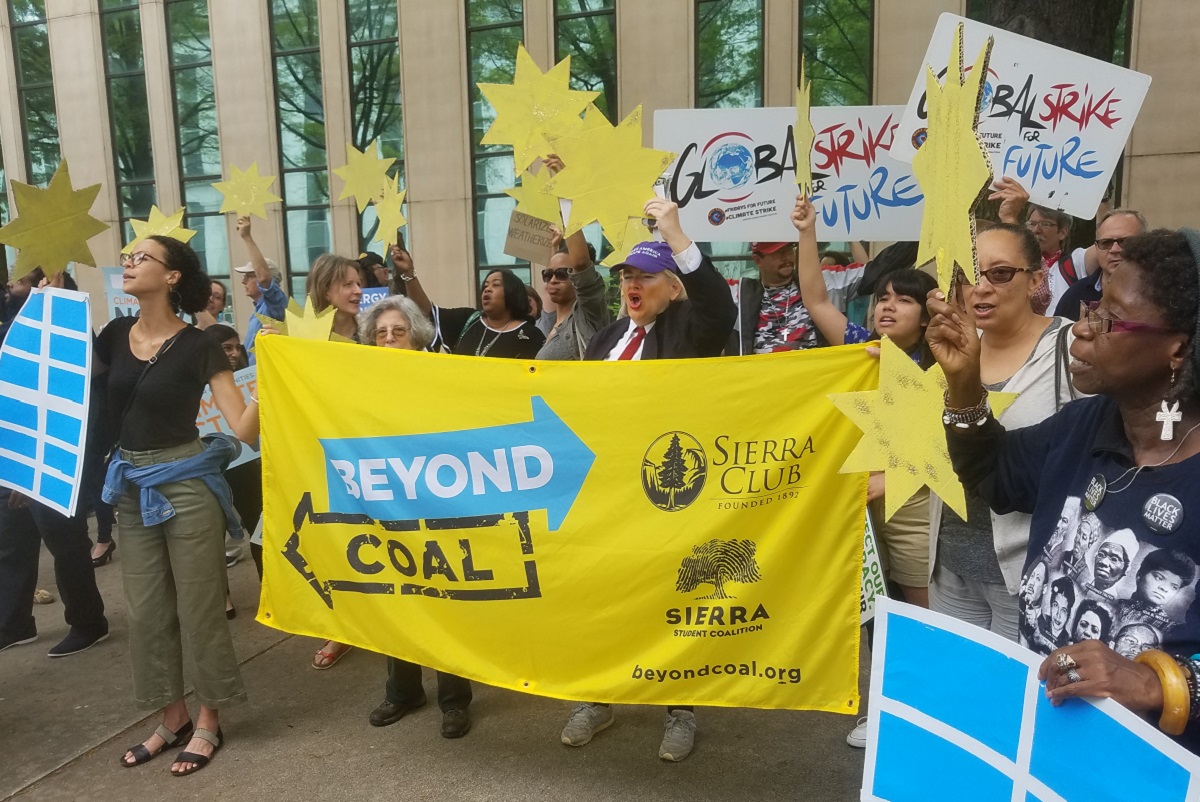“Ain’t no power like the power of the people, ’cause the power of the people don’t stop! Say what?”
On April 8 a group of full-throated activists marched in Atlanta with a call and response that pledged to summon “people power” to achieve clean, affordable energy in Georgia.
Neil Sardana is the Beyond Coal organizing representative for the Sierra Club’s Georgia Chapter. “It’s the power of the people that will continue to energize our movement and bring clean energy and environmental justice to our communities,” he says.
The Club was the driving force behind the Atlanta rally of some 65 participants, which gathered together such allies as environmental justice, Green New Deal, and youth climate advocates; solar industry representatives; and faith leaders. Grammy award-winning artist and climate activist Esperanza Spalding also lent her voice to the effort.

Ralliers, including recording artist Esperanza Spalding at center, call for clean energy in Georgia.
The rally began at Central Presbyterian Church where eight speakers from across the coalition called for progress in environmental justice issues and stricter rules around the storage of toxic coal ash from coal-fired plants. The group then turned its attention to the five-member Georgia Public Service Commission (PSC), which was holding the first session of its triennial review of Georgia Power’s 20-year energy plan.
The ralliers marched to the nearby building where the hearing was underway. The group cheered some 1,400 hand-written letters demanding clean, affordable energy that were later delivered to the PSC by the Atlanta Chapter of the Climate Reality Project, a Sierra Club partner organization on clean energy efforts.
The power company has taken some steps away from coal and towards solar energy during past reviews, but community members who spoke during the public comment portion of the hearing—prior to the rally—urged the PSC to speed the process significantly. They argued that solar energy makes economic as well as environmental sense now that it’s increasingly more affordable than coal.
One of the PSC hearing speakers, and also a rally participant, was Amneh Minkara, a native of Cobb County, Georgia and a JD candidate studying environmental policy at Emory University School of Law. Already a Sierra Club member, she started canvassing with the chapter when two PSC seats were up for election in 2018. This past January she began attending its Clean Energy for All Committee meetings and also founded a local Sunrise Movement group. “I feel that we need to energize youth around this issue,” she says.
Minkara spoke about the Green New Deal at the PSC hearing. “I focused on its jobs piece because young people will be entering the job market at a time when the transition from dirty to clean energy is occurring. We need young people working in policy, too,” she says. She also spoke of the risk to youth in particular from coal ash-associated respiratory illnesses.

Minkara speaking at the Georgia Public Service Commission hearing.
She’s grateful to Club staffers for showing her the ropes. “I’ve always been a tree-hugger, but I’m new to activism,” she says. “They were so welcoming and made it easy for me to follow in their footsteps.”
The sun visuals carried by ralliers were made by Minkara and the rally team. “They were so fun to do!” Minkara says. “I’ve been making protest signs for a while, and realized that bike shops have a lot of cardboard to give away and are happy to do it. The visuals also made us look more organized, since we’ve been using a sun emoji in rally promos.” They cut out about 50 stars and painted them bright yellow. “We wanted the rally to be positive; we weren’t attacking anyone. The yellow gives feelings of optimism and happiness,” she says.

Minkara creating star visuals made from repurposed cardboard boxes.
For this energy plan review cycle, Georgia Power has proposed shutting down its Hammond and McIntosh coal-fired plants and adding 1,000 megawatts of solar.
The argument for winding down Georgia’s coal power production more rapidly is a strong one. For example, based on 2018 data Plant Scherer (near Macon) is the largest in the US fueled solely by coal, and is the number one emitter of greenhouse gas emissions in the country.
The PSC’s hearing process on the energy plan continues in May and June, and a final decision on it is expected later this summer. “We’re at a turning point in our history where renewable energy, particularly solar for Georgia, is significantly more affordable than continuing to burn fossil fuels, says Sardana. “There’s virtually no margin for putting more carbon into our atmosphere, or for continuing to place coal ash in sites that leak toxic chemicals into our waterways.”

"Ain't no power like the power of the people...."
In the meantime, Sardana is working to strengthen the connections among core local organizations. “I reached out to Brionté McCorkle, executive director of Georgia Conservation Voters, to co-sponsor and emcee the April rally with me,” he says. (McCorkle is a former deputy director of the Sierra Club’s Georgia Chapter.) Other groups with whom he’d like to grow existing collaborations are Georgia Watch and Environment Georgia.
The chapter will also step up its campaign on coal ash by organizing in communities where risk is high. It already supports Georgia Water Coalition and is working with them on how to address the issue throughout the state.
Newly-minted activist Minkara is confident that things will work out. “Even though achieving the outcome we all want to see isn’t quick or easy, I’m still optimistic about realizing a clean energy future for Georgia,” she says. “Participating in rallies with my kind of people gives me hope for the future.”
